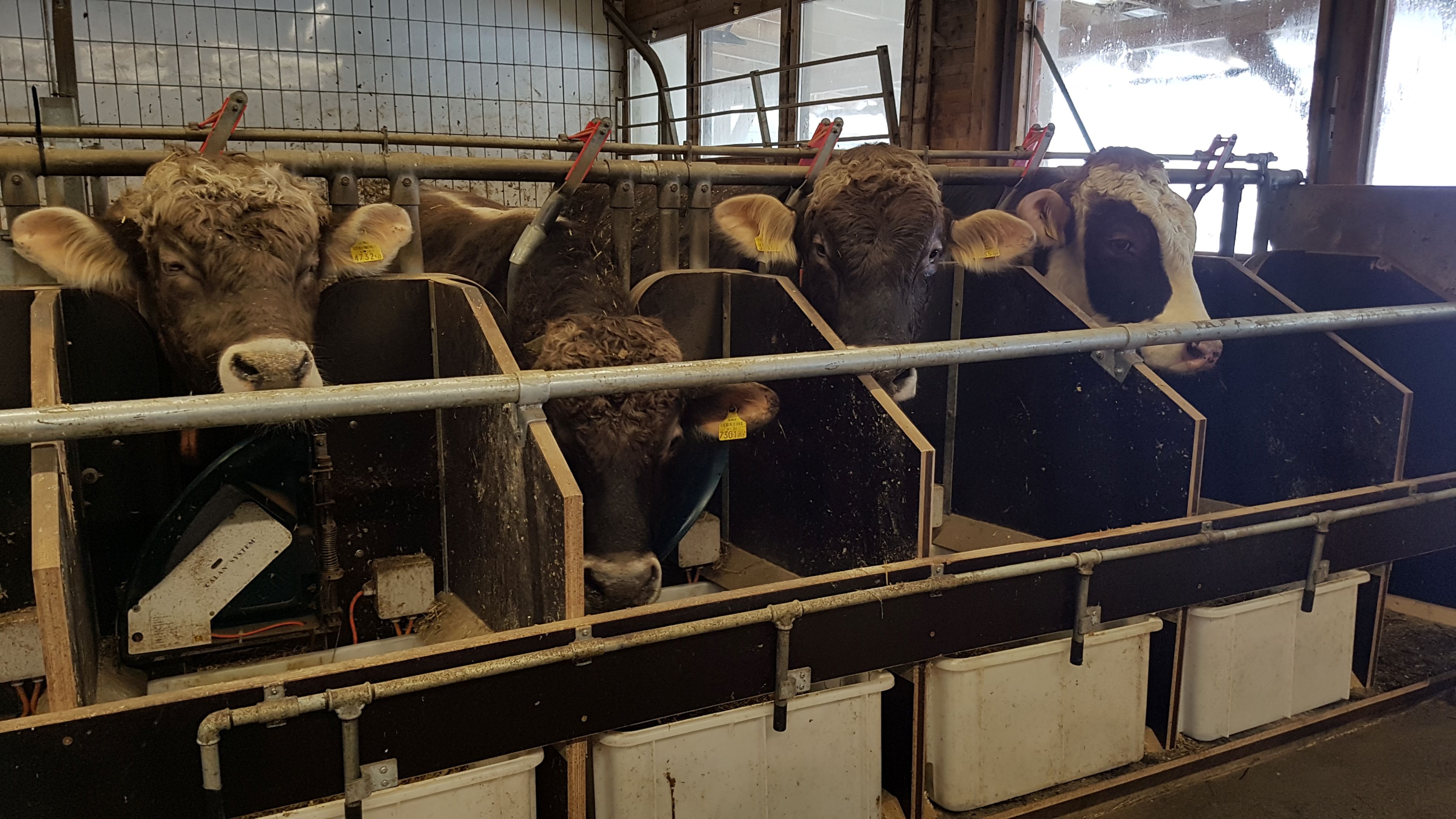Brown Swiss (BS) is a dairy-focused cattle breed and, with almost 6%, is the third most common breed in Austria after Fleckvieh (FV) (75% of all cattle) and Holstein Friesian. BS is rarely found in bull fattening, and when it is, it is often crossbred with meat breeds. This is because dairy breeds gain weight more slowly than the dual-purpose FV breed, the carcasses are less meaty and feed conversion is poorer. There are breeding options to prevent purebred dairy calves and calf fattening also represents a sales channel.
Exports of dairy calves abroad are very common and are often criticized. According to Rinderzucht Austria (2022), around 5% (almost 40,000 pieces) of Austrian calves are exported abroad for fattening. For reasons of animal ethics and social responsibility, a holistic view of milk production AND fattening should be taken.
There is little (current) literature on the fattening of dairy breeds (BS, Holstein Friesian) in comparison to FV. However, from the known literature and practical observations, it can be assumed that BS achieves better results in fattening than the Holstein Friesian breed. In addition, with Brown Swiss the meat performance is taken into account in the breeding value, even if it is only given a low weighting, but not with Holstein Friesian.
As part of the research project, two bull fattening experiments were carried out. One test took place on a practical farm, the other as an exact test in the fattening barn of the HBLFA Raumberg-Gumpenstein.
BS bulls had numerically higher feed intake than FV and feed expenditure per kg gain was 11-15% higher. BS bulls were inferior to FV bulls with around 100 g lower daily weight gain and almost 2% lower slaughter. In the EUROP meat class, BS bulls achieved half R and O, while all FV bulls reached meat class U. However, there were no differences in the proportion of valuable cuts (English, Schlögel) in relation to the carcass weight. Furthermore, BS had a numerically higher fat class, which was also reflected in the kidney fat percentage and the fat percentage of the missing rib.
There were no significant differences in meat quality (no differences in shear strength/tenderness, meat and fat color, cooking and grilling juice, intramuscular fat). Differences in favor of BS were evident in the loss of dripping juice in the meat and in the juiciness according to tasting. For saturated and monounsaturated fatty acids, BS showed a more favorable fatty acid pattern.
If you use the results in the IDB contribution margin calculator from the Federal Office for Agriculture and Mountain Farmers' Issues, it shows that BS bulls are behind FV bulls, despite the favorable calf prices included in the program. However, if you do not use the prices for calves from your own production for FV, but rather those from purchased calves, BS bulls are competitive.






